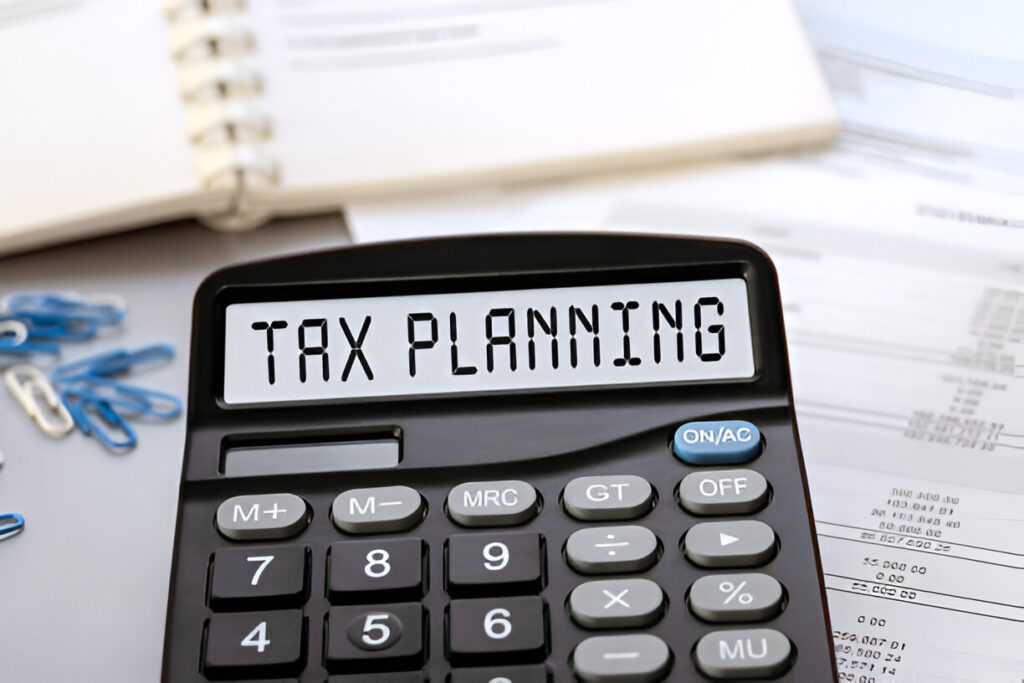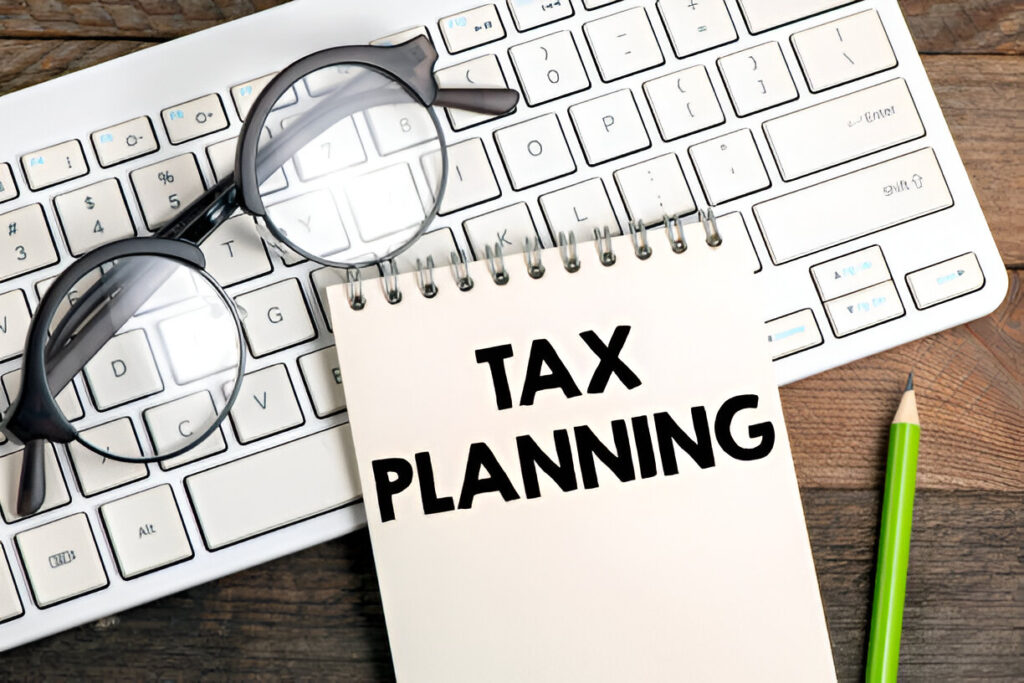Although taxes are an inevitable aspect of life, how you handle them can have a significant impact on your financial future. Consider a proactive approach that lawfully reduces your debt, optimizes your savings, and properly fits your long-term objectives. This is the foundation of tax planning. Think of this as your guide to creating a more intelligent financial future.
What is Tax Planning?
Tax planning is the process of strategically analyzing and organizing your financial situation to lower your overall tax bill while staying within the law. Utilizing every credit, deduction, and tax-advantaged opportunity that the tax code permits is more important than evading taxes through illegal means.
Its main goals are as follows:
Minimizing Your Tax Bill: You can save more of your hard-earned money and pay less to the government by finding legal ways to optimize your eligibility for credits or lower your taxable income.
Optimizing Wealth Growth: You may accelerate your path to financial freedom by reinvesting every dollar you save on taxes, which will optimize your compound growth.
Ensuring Compliance: By ensuring your financial activities are properly documented and comply with all tax laws, a well-executed tax plan helps you prevent mistakes, fines, and the pressure of audits.
Reaching Financial Objectives: Tax planning incorporates these goals into a framework that is tax-efficient, whether they are starting a business, saving for retirement, a child’s education, or a down payment on a house.
What Is the Process of Tax Planning? A Year-Round Approach
What is the actual process of tax planning? It’s much more than a yearly rush to meet April 15th. Real tax preparation is a dynamic, continuous process that entails anticipating needs and making wise choices all year long.
Examine Your Financial Situation: Start by understanding your sources of income, outlays, investments, and present financial situation. This makes it easier to find places where tax savings are possible.
Recognize Tax rules: Keep yourself updated on recent developments, expected changes that may affect your circumstances, and current tax rules. Tax laws are intricate and ever-changing.
Determine Deductions and Credits: Keep a close eye on all of your qualified expenses, including mortgage payments, charity contributions, and medical costs, and look into any tax credits that can reduce your taxable income or tax liability, such as those for education or energy-efficient home upgrades.
Strategic Timing of Income and Expenses: In many cases, you can move into a lower tax bracket or be eligible for a deduction by postponing or accelerating income or expenses to a new tax year.
Utilize Tax-Advantaged Accounts: Make use of particular financial products created by the government to provide tax advantages. Tools like brokerage accounts and 529 programs are useful in this situation.
Continuous Review and Adjustment: Your financial objectives, laws, and life all change. To make sure your tax plan is still optimized to your current circumstances, it is essential to review it on a regular basis (at least once a year).
What is a Tax Planning Brokerage Account?
Unlike an IRA or 401(k), a tax planning brokerage account is not a unique kind of account. Instead, it’s an investment account that is primarily handled to maximize tax efficiency. Strategic management can greatly lower your tax burden, even though gains are taxed either annually or at the time of sale, and contributions are not tax-deductible.
Asset location: It is the placement of tax-efficient assets (such as growth stocks or municipal bonds that are exempt from federal taxes) in your taxable brokerage account and tax-inefficient assets (such as bonds or high-dividend stocks that produce ordinary income) in tax-advantaged accounts (such as an IRA or 401(k)).
Tax-Loss Harvesting: Selling investments at a loss to offset capital gains (and maybe up to $3,000 of regular income each year) is known as tax-loss harvesting. It is possible to carry over these losses forever.
Long-Term Capital Gains: Capital gains from investments held for more than a year are taxed at lower long-term capital gains rates as opposed to higher ordinary income tax rates.
Qualified Dividends: Purchasing equities that pay qualified dividends, those that satisfy certain IRS requirements, can also result in reduced tax rates when compared to regular dividends.
By keeping tax planning in mind when managing a brokerage account, you may minimize the “tax drag” on your returns and make sure you’re not just increasing your wealth but doing so as efficiently as possible.

What is the Tax Benefit of a 529 Plan?
A 529 plan is an education savings plan that offers substantial tax benefits and is sponsored by states, governmental agencies, or educational institutions. Its purpose is to assist families in saving for future school expenses. It’s an essential part of your tax planning strategy, particularly if you have kids or grandkids.
A 529 plan’s contributions increase tax-free. Your investments can compound more aggressively because you do not have to pay federal income tax on any earnings made within the account each year.
The main perk is tax-free withdrawals for eligible expenses. Withdrawals (including all earnings) from a 529 plan are completely tax-free at the federal level when they are utilized for eligible educational costs. Tuition, supplies, equipment, accommodation, and board (for students enrolled at least half-time), K–12 tuition (up to $10,000 annually), student loan payments (up to $10,000 per beneficiary), and apprenticeship program costs are all considered qualified expenses.
Several states provide extra tax advantages, such as state income tax credit or deduction, for contributions made to their 529 plans. In the year you contribute, this can result in an instant tax break.
For federal gift tax purposes, contributions made to a 529 plan are regarded as completed gifts. By giving up to five years’ worth of the yearly gift tax exclusion limit all at once (for example, $90,000 in 2025 for an individual and $180,000 for a couple), you can even “superfund” a 529 plan and enable assets to grow tax-free outside of your estate. 529 plans are a mainstay of family tax planning and education funding because of these significant advantages.
Your Road Map to a More Stable Financial Future
Ready to make the switch from reactive to proactive money management? Although the fundamentals of tax planning are laid out in this article, it can be difficult to deal with the complexities of brokerage accounts and maximize the tax benefit of a 529 plan. Avoid making costly errors or leaving money on the table. Speak with Koffex Accounting to take the next step toward efficient tax planning and get a customised plan that suits your needs.
FAQs
What is tax planning, and how is it different from tax preparation?
Tax planning is a proactive, year-round strategy where you arrange your financial affairs to legally minimize your tax liability. It focuses on future financial decisions. In contrast, tax preparation is a reactive process that involves compiling your financial data from the past year to accurately file your tax return.
How does tax planning work to save me money?
Tax planning simply utilizes a variety of legal strategies throughout the year. This includes maximizing deductions and credits you qualify for, strategically timing income and expenses, choosing tax-efficient investment vehicles, and optimizing your retirement contributions.
How often should I review my tax plan?
Tax planning should be an ongoing process. It’s highly recommended to review your tax plan at least once a year, preferably towards the end of the year, to make any necessary adjustments before the tax year closes.






